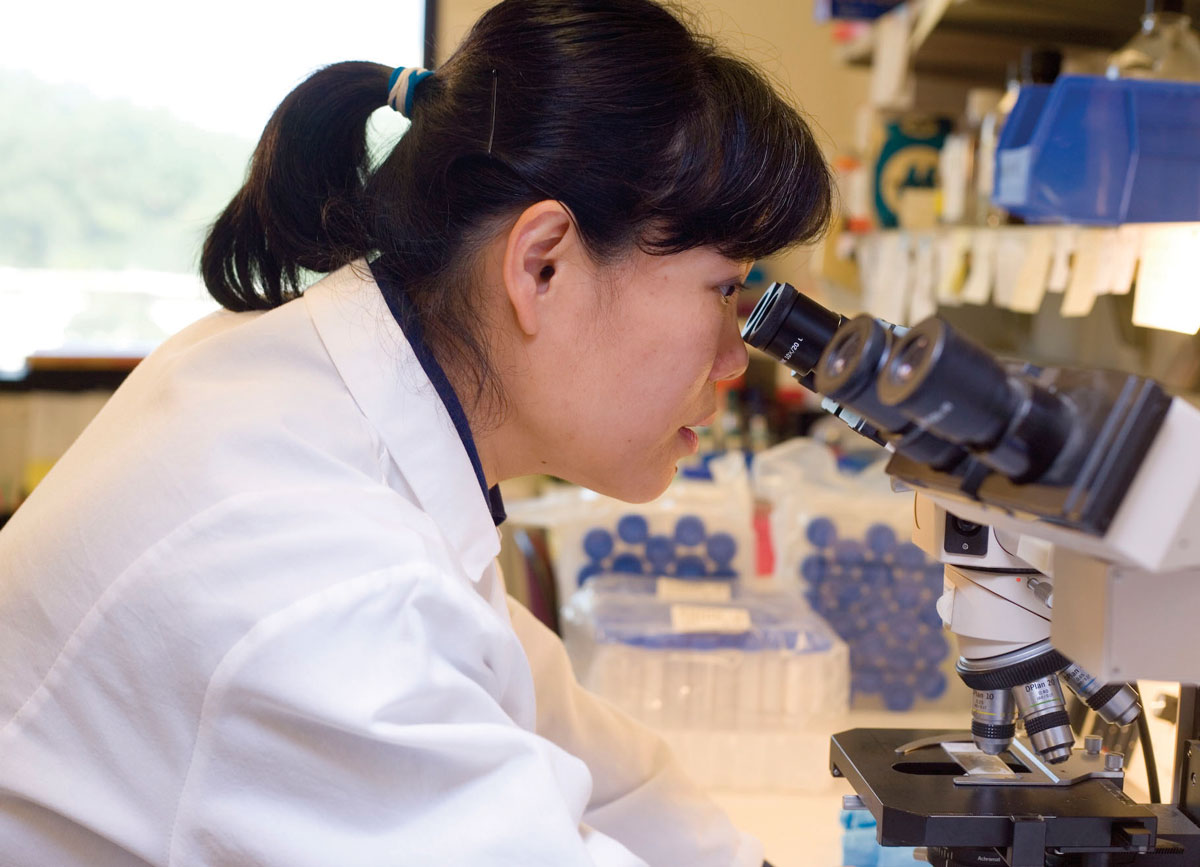
Dr. Hua Su is using her CRPF grant to study the genes in hopes of developing a simple molecular test to diagnose breast cancer in its earliest stages. Known as DCIS (ductal carcinoma in situ), this cancer is contained within the breast’s ducts; no malignant cells have traveled beyond the tumor to invade nearby tissue; and it is nearly 100 percent curable.
For Dr. Su, understanding the role these genes play in breast cancer is more than an interesting scientific question; it is an opportunity with enormous lifesaving potential.
“I want to better understand the genetics of breast cancer because the disease has such a profound effect on women in the United States,” Su says. She has found a committed mentor in Dr. Careen Tang, whose laboratory is at the epicenter of breast cancer research at the Georgetown University Lombardi Comprehensive Cancer Center, and she is well on her way to achieving her goal.
I want to better understand the genetics of breast cancer because the disease has such a profound effect on women in the United States
The two genes that are the focus of Su’s research are known as ErB-2 and CXCR4. ErB-2 is a known oncogene, a gene that causes cancer, found in the tissues of advanced breast cancer that helps cancer cells spread beyond the breast. The CXCR4 gene is found in advanced breast cancer as well and is a common factor in many cancer cells. Yet its function isn’t well understood. It has also been discovered alone, without ErB-2, in very early stage breast cancer tissue and in precancerous tissue in the breast. This distinction may be a key to early breast cancer detection.
“We need to clarify the role of CXCR4,” Su explains, “and determine if it behaves differently in early stage cancer tissues than it does in later stage cancers. We need to understand if and how the two genes work in collaboration.”
Do the two need each other to prompt the spread of breast cancer? Could the presence of the CXCR4 gene alone in breast tissue serve as a signal for DCIS or even for abnormal cells before they make the dangerous transformation into cancer? Dr. Su hopes to find the answers in hundreds of breast cancer tissue samples she is testing. “There are thousands of molecular patterns in breast cancer tissue,” Su adds.
“Finding a single gene, or protein instigated by a gene, that would be a clear signal of early cancer isn’t likely, but I’m confident that we will be able to identify a set of proteins and genes that when found in a woman’s blood will signal an early breast cancer.” And Su believes the twin genes she is scrutinizing are likely candidates to offer an opportunity for protective intervention or even the promise of ultimate cure.